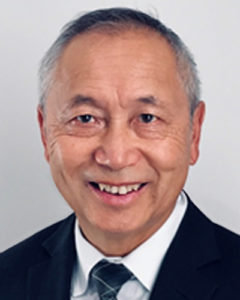By Hanson Hom, AICP, ASLA, May 7, 2020
 AS I WRITE THIS, I am enjoying a respite from yet another Zoom meeting. It’s ironic that, a few months ago when life was “normal,” we complained about having to rush from one meeting to another, and getting pulled away from the quiet time we need to do “real work.”
AS I WRITE THIS, I am enjoying a respite from yet another Zoom meeting. It’s ironic that, a few months ago when life was “normal,” we complained about having to rush from one meeting to another, and getting pulled away from the quiet time we need to do “real work.”
I am now yearning for those in-person meetings where I didn’t have to virtually “raise my hand” to speak, or think about when I might be able to get a haircut. Sitting here at my laptop, without video, audio, apps, or Wi-Fi, seems almost primitive, and maybe too quiet. I ponder the state of our lives, how they might change post-COVID-19, and what we as planners could be doing beyond virtual conferences and meetings. Here are some thoughts.
The world has changed
That should prompt us to revisit our core values and responsibilities as planners. Just as wildfires, flooding, and other climate-enhanced events jolted our perspective on land-use planning, the pandemic has heightened our awareness of the intersection of planning and public health. We were mindful of the dire warnings from scientists about climate change exacerbating fires, floods, and sea level rise. But until those became disasters that we witnessed on daily newscasts (the California and Australia firestorms, for example), it was business-as-usual for many vulnerable communities. Similarly, we are all reading about and seeing the tragic human toll and enormous economic impact wrought by COVID-19 and past pandemics. Will we see the relevance of a pandemic to urban planning (which may have been tenuous until now) and act on it? Or will we just try to return to business-as-usual urban planning.
It is becoming common public policy to work toward creating resilient cities that can sufficiently respond to a wide range of social, fiscal, and physical risks. While planning for resiliency against a worldwide pandemic seems daunting, we can, at the local level, highlight and plan for reducing the public health risks and economic inequities that exist in our communities. A study by the Kaiser Family Foundation revealed a disproportionate impact from the pandemic on communities of color and low-income populations. The recently enacted federal stimulus bills respond directly to the severe financial disruptions that the pandemic has visited on our economy, and to a lesser extent, on our cities; but the pandemic has underscored the public health crisis among our most vulnerable populations. These communities, because of past land-use decisions and proximity to heavy industrial uses, have been subjected to higher concentrations of air pollutants, while also suffering from inadequate access to parks, recreational amenities, and public health facilities.
Resilient communities can close the public health gap
Public health and medical studies have long documented these disparities, but the pandemic raised them to the forefront of public discourse. A recent national study from Harvard found that urban populations with a high exposure to “dirty air” have a higher incidence of respiratory health problems linked to a higher death rate from COVID-19. The hoped-for outcome is that this consciousness will translate to a heightened response to public health risks in disadvantaged communities, along with increased advocacy for socially responsible and equitable land-use and mobility planning.
Another well-publicized outcome from the pandemic is data showing that air quality improved dramatically and almost instantly as business closures translated to fewer cars on the road. The World Economic Forum reports that major urban areas in China, South Korea, India, and Italy saw up to a 40 percent reduction in air pollution (PM2.5 nitrate). The air quality maps and the dramatic before and after pictures “speak a thousand words.” Of course, the cleaner air comes with a huge economic price that should not be trivialized.
A pandemic-induced economic shutdown is certainly not the desired solution to air pollution, but this viral outbreak has demonstrated that pollution can be ameliorated by a collective and orchestrated human response. It confirms that polluted air is not an inevitable urban condition and that national or global changes in human behavior can yield immediate and measurable environmental benefits. Better air quality will help us address climate change and strengthen the resiliency of our communities with respect to public health.
This is our time
This tragic pandemic presents important lessons for us as planners. Let’s use this knowledge and this time to further resiliency, public health, public awareness, and equity in the communities where we live and work.

